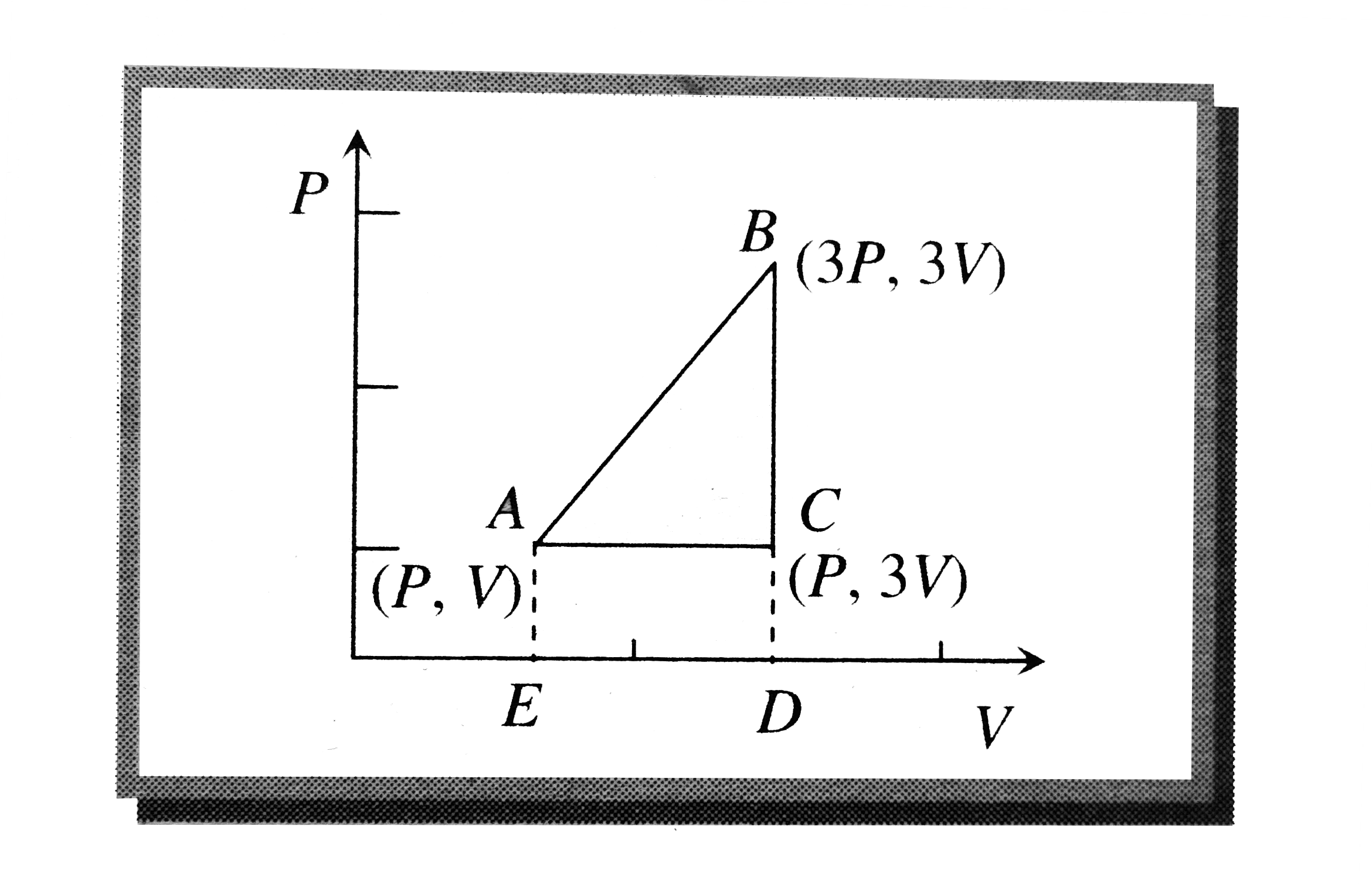An ideal gas is taken around the cycle ABCA as shown in P-V diagram. The net work done during the cycle is equal to :

W(1/2)(3V1−V1)×(4P1−P1)=3P1V1
Topper's Solved these Questions
- INTERNAL ENERGY BOOK - ICSECHAPTER - INTERNAL ENERGY EXERCISE - SELECTED PROBLEMS (FROM HEAT ENGINES)
21 Videos
- INTERNAL ENERGY BOOK - ICSECHAPTER - INTERNAL ENERGY EXERCISE - SELECTED PROBLEMS (FROM ISOTHERMAL AND ADIABATIC PROCESSES )
10 Videos
- GRAVITATIONBOOK - ICSECHAPTER - GRAVITATIONEXERCISE - FROM THE HUBBLE TELESCOP
2 Videos
- MOTION IN FLUIDS BOOK - ICSECHAPTER - MOTION IN FLUIDS EXERCISE - SELECTED PROBLEMS (FROM POISEUILLE.S FORMULA)
19 Videos
Similar Questions
An ideal gas is taken around the cycle ABCA as shown in P-V diagram. The net work done by the gas during the cycle is equal to :

View SolutionAn ideal gas is taken around the cycle ABCA as shown in P-V diagram. The net work done by the gas during the cycle is equal to :

View SolutionAn ideal gas is taken around the cycle ABCA shown in P−V diagram. The net work done by the gas during the cycle is equal to

View SolutionAn ideal gas is taken around the cycle ABCA shown in P−V diagram. The net work done by the gas during the cycle is equal to

View SolutionAn ideal monoatomic gas is taken round the cycle ABCDA as shown in the P-V diagram. The work done during the cycle is

View SolutionAn ideal monatomic gas is taken round the cycle ABCDA as shown in the P-V diagram (see figure). The work done during the cycle is

View SolutionAn ideal monoatomic gas is taken round the cycle ABCDA as shown in the P-V diagram. The work done during the cycle is

View SolutionAn ideal gas is taken around the cycle ABCA as shown in the P-V diagram. The total work done by the gas during the cycle is

View SolutionAn ideal gas is taken around ABCA as shown in the above P−V diagram. The work done during a cycle is

View SolutionAn ideal gas is taken around the cycle ABCD shown in the PV diagram below. The net work done by the gas during the cycle is equal to

View Solution
